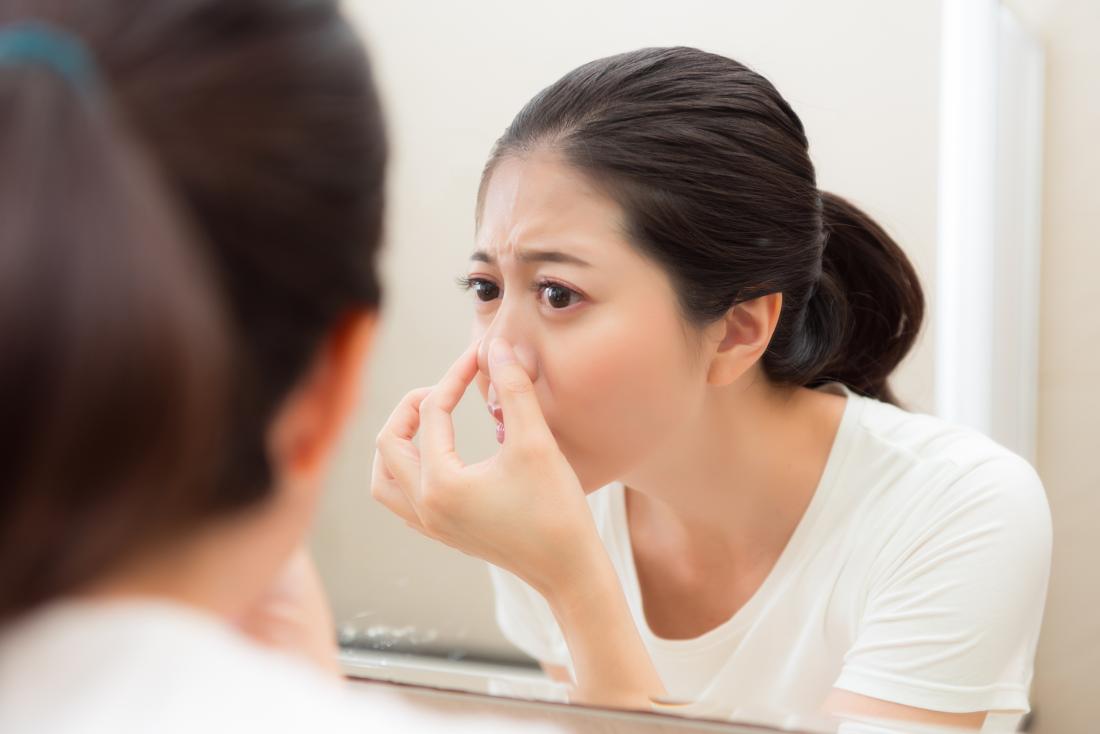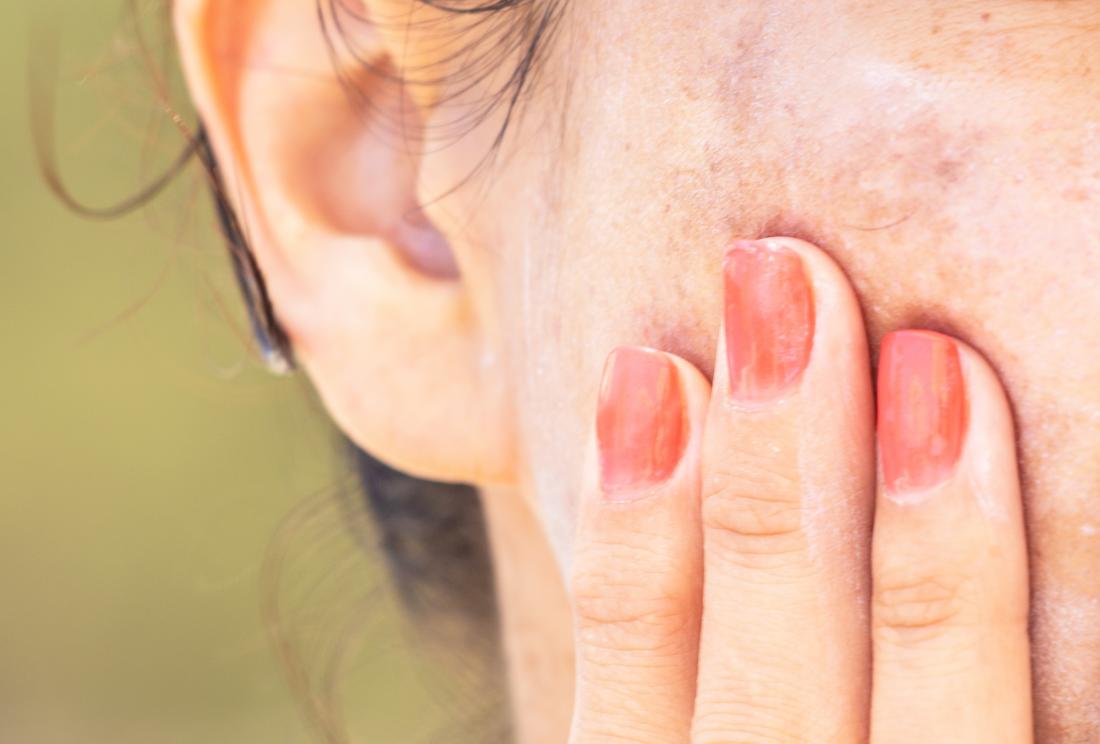Melasma is a common pigmentation disorder that causes brown or gray patches to appear on the skin, primarily on the face.
The most common areas for melasma to appear on the face include:
- the bridge of the nose
- the forehead
- the cheeks
- the upper lip
Melasma may also appear on other areas of the body, especially those exposed to a lot of sunlight. These areas may include:
- the forearms
- the neck
- the shoulders
According to the American Academy of Dermatology, only 10 percent of all cases of melasma occur in men. Women with darker complexions and who are pregnant are at greater risk of developing melasma.
Pictures
 |
 |
 |
 |
Causes
Doctors do not fully understand why melasma occurs. It may be due to the malfunction of the melanocytes (the color-making cells) in the skin, causing them to produce too much color.
As a result, people with darker skin tones are more likely to develop melasma, as they have more melanocytes than people with lighter skin.
Potential triggers for melasma include:
- changes in hormones during pregnancy (chloasma), hormone treatment, or while taking birth control pills
- sun exposure
- certain skin care products, if they irritate a person's skin
Also, there may be a genetic component to melasma, as people whose close relatives have experienced melasma are more likely to develop it themselves.
Symptoms

The primary symptom of melasma is the development of discolored patches of skin. While it does not cause any other physical symptoms, some people find the appearance of these patches bothersome.
The most common area for patches of melasma to appear is the face. Common locations include the upper lips, bridge of the nose, cheeks, and forehead.
Less commonly, a person may also have patches on their arms and neck.
Diagnosis
Dermatologists find most cases of melasma easy to diagnose during a visual examination. However, since melasma can resemble other skin conditions, a dermatologist may take a small biopsy during the initial visit.
A biopsy involves removing a very small portion of the skin for further examination in a laboratory.
A doctor may also use a device called a Wood's light to look more closely at the skin.
Treatment
Treatment is not always necessary for melasma.
If hormonal changes, such as those that occur during pregnancy or while taking birth control pills, have caused melasma, it will fade after delivery or once a person stops taking the pills.
For other people, melasma can last for years or even for the rest of their lives. If melasma does not fade over time, a person can seek treatment to help remove or fade the patches.
However, not all treatments work for everyone, and melasma may come back even after successful treatment.
Treatment options for melasma include:
Hydroquinone

Doctors often use hydroquinone as the first line of treatment for melasma. Hydroquinone is available as a lotion, cream, or gel.
A person can apply the hydroquinone product directly to the patches of skin that are discolored.
Hydroquinone is available over the counter, but a doctor can also prescribe stronger creams. Hydroquinone works by lightening the color of the skin patches.
Corticosteroids and tretinoin
Corticosteroids and tretinoin come in creams, lotions, or gels. Both corticosteroids and tretinoin can help lighten the color of the melasma patches.
Combined creams
In some cases, a dermatologist may choose to prescribe combination creams that may contain hydroquinone, corticosteroids, and tretinoin in one. These are called triple creams.
Additional topical medications
In addition to or instead of other medicated creams, a dermatologist may also prescribe azelaic acid or kojic acid. These acids work to lighten the dark areas of skin.
Medical procedures
If topical medications do not work, a dermatologist may recommend procedures such as:
- microdermabrasion
- chemical peel
- laser treatment
- light therapy
- dermabrasion
Some of these treatment options have side effects or may cause additional skin problems. It is best to speak with a doctor or dermatologist about all the possible risks.
If a person has had melasma before, they can try to avoid triggers by:
Melasma is a common skin problem that causes brown to gray-brown patches on the face. Although the exact causes of melasma are unclear, common triggers include sun exposure, pregnancy, birth control pills, and cosmetics.
If you have melasma, dermatologists recommend the following tips for achieving a more even skin tone:
- Wear sunscreen daily: One of the most common treatments for melasma is sun protection. Since sunlight triggers melasma, it is important to wear sunscreen every day, even on cloudy days and after swimming or sweating. Choose a sunscreen that offers broad-spectrum protection, a Sun Protection Factor (SPF) of 30 or more, and zinc oxide and/or titanium dioxide to physically limit the effects of the sun’s rays on your skin. Apply sunscreen 15 minutes before going outside and reapply at least every two hours.
- Wear a wide-brimmed hat and sunglasses when you’re outside: As a recent study in the journal Nature illustrates, sunscreen alone may not give you the sun protection you need. Whenever possible, seek shade and wear protective clothing in addition to applying sunscreen.
- Choose gentle skin care products: Choose skin care products that don’t sting or burn, as products that irritate the skin may worsen melasma.
- Avoid waxing: Waxing may cause skin inflammation which can worsen melasma, so it’s important to avoid waxing areas of the body affected by the condition. Ask a dermatologist about other types of hair removal that may be right for you.
If your melasma still doesn't go away, you may want to check out our Melasma super serum, which includes many optimal ingredients that work together to increase effectiveness. more detail here



